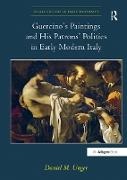Read more
Guercino's Paintings and His Patrons' Politics in Early Modern Italy examines how the seventeenth-century painter Guercino instilled the political ideas of his powerful patrons-including Pope Gregory XV, Cardinal Spada, and La Vrillière-into his paintings. Bridging the gap between social history and art history, the book untangles the threads of ar
List of contents
Contents: Preface; Introduction; A biographical sketch; Part 1 Faith and Hope at the Dawn of the War: In defense of the papacy: St Jerome Sealing a Letter; In praise of religious fervour: Return of the Prodigal Son; A call for a crusade: St William of Aquitaine and Pope Gregory VII; A message to the king of France: Burial and Reception into Heaven of St Petronilla. Part 2 Disillusionment: A memorial: St Gregory the Great with Sts Ignatius of Loyola and Francis Xavier; A warning for the queen of France: Death of Dido; Cardinal Magalotti's revenge: Esther before Ahasuerus; Commemorating peace after the war of Castro: Peace Between the Romans and the Sabines; Bibliography; Index.
About the author
Daniel M. Unger teaches art history at Ben-Gurion University of the Negev, Israel. He has published numerous articles on art and politics in seventeenth-century painting in such venues as Word & Image and Storia dell'arte.
Summary
Guercino's Paintings and His Patrons' Politics in Early Modern Italy examines how the seventeenth-century painter Guercino instilled the political ideas of his powerful patrons-including Pope Gregory XV, Cardinal Spada, and La Vrillière-into his paintings. Bridging the gap between social history and art history, the book untangles the threads of ar

